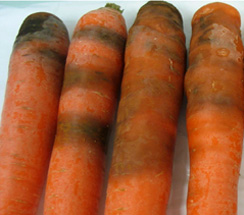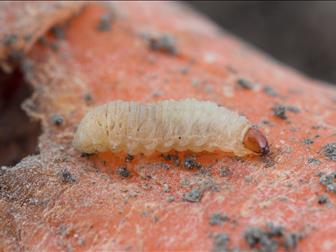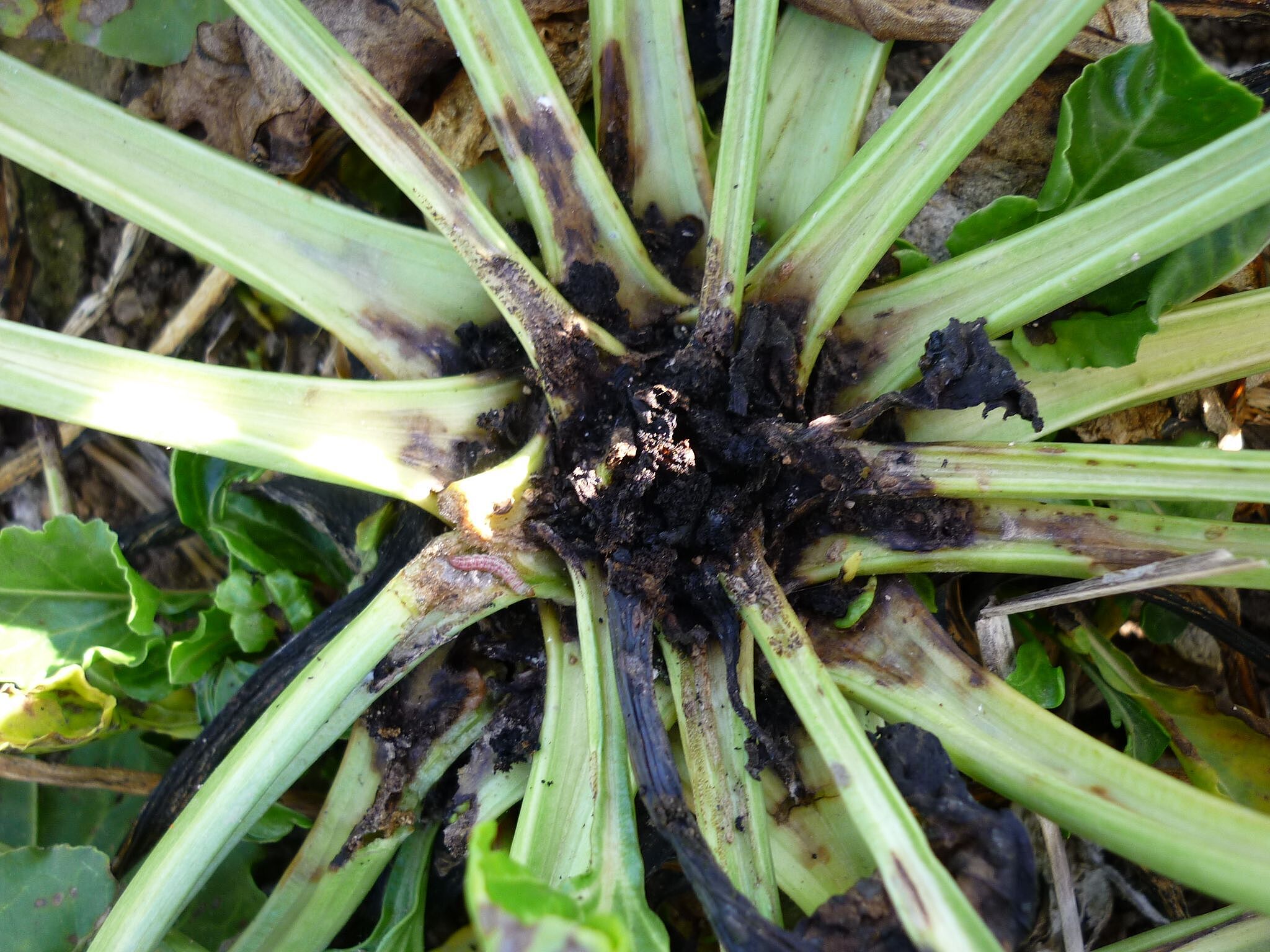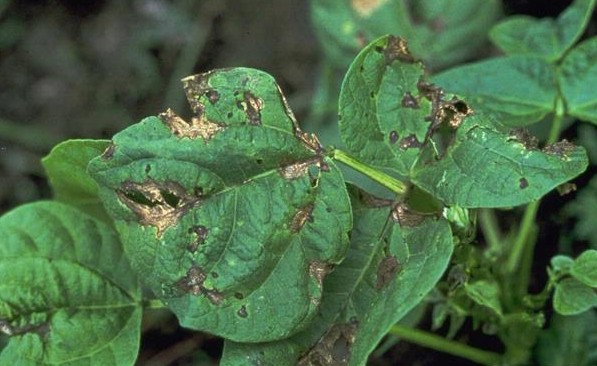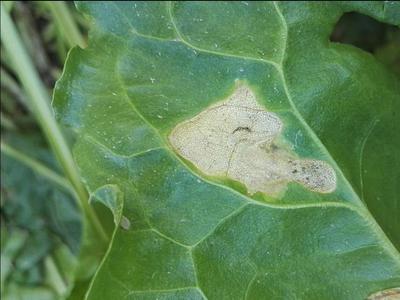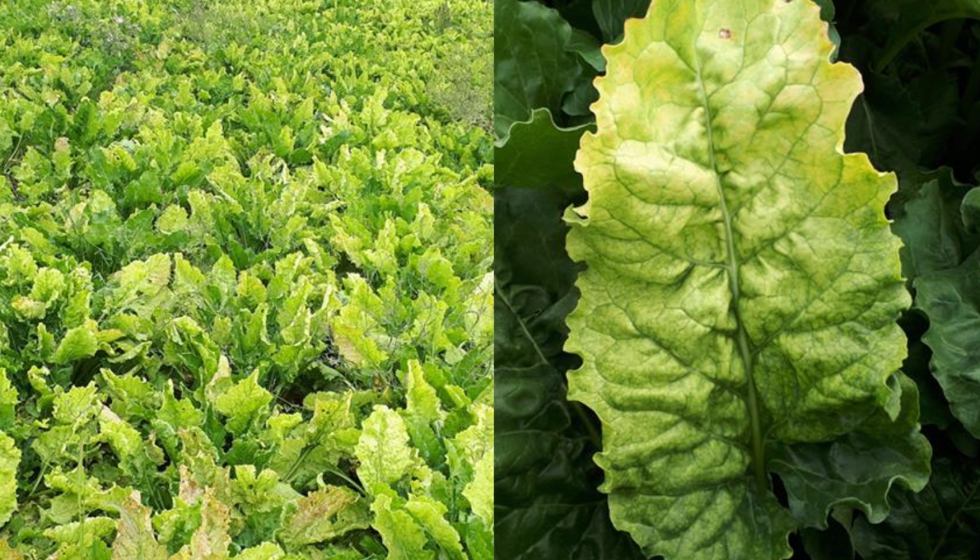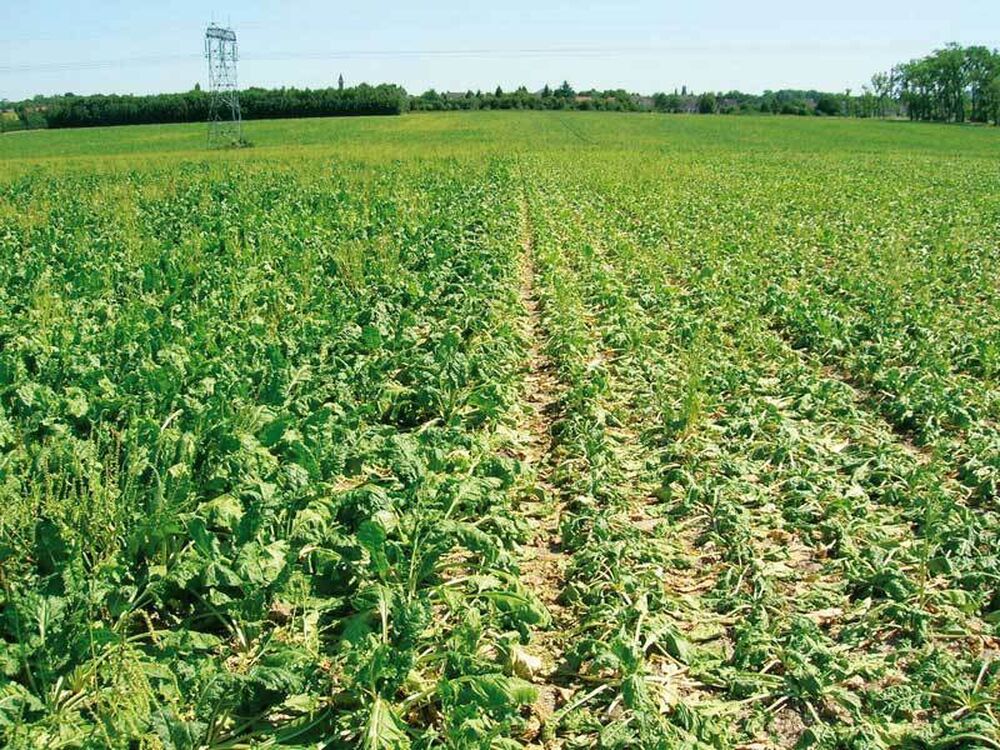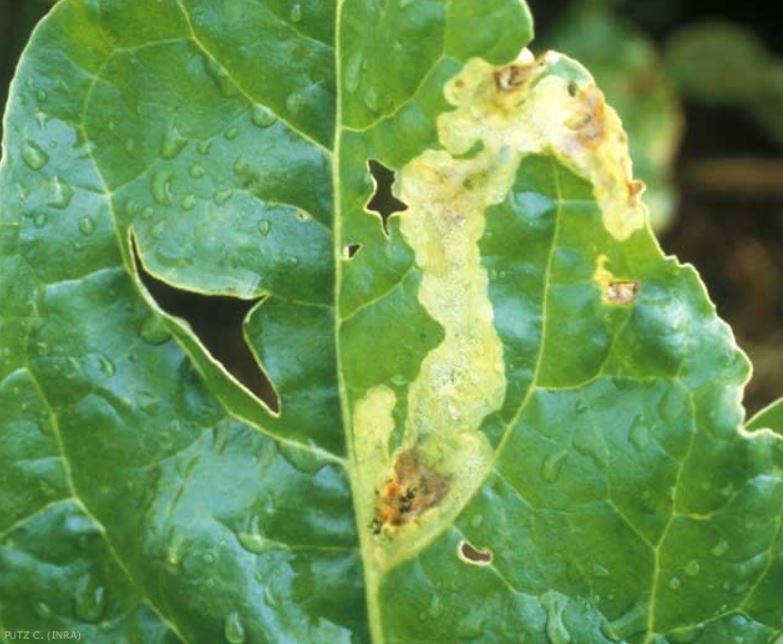
Remolacha de mesa
How to recognize and combat beet yellows virus
Beet Yellowness Virus
Virus
Type:
Risk to the plant:
HIGH
Beet Yellow Virus (Byv)
Pathogen:
Virus

WHO CAUSES IT?
Beet Yellow Virus (BYV) is a pathogen that primarily affects beets, causing a disease known as beet yellowness virus. This virus belongs to the Closterovirus genus, within the Closteroviridae family. BYV is a positive-sense single-stranded RNA virus. The BYV cycle begins when a vector, usually an aphid, feeds on the sap of an infected plant. Aphids acquire the virus and transmit it to new plants during their feeding. Once inside the plant, BYV replicates in phloem cells, interfering with nutrient transport and causing the characteristic symptoms of the disease. Virus replication and spread through the phloem are facilitated by proteins encoded by the virus itself.
SYMPTOMS
The beet yellow virus affects beet plants, causing a series of symptoms that significantly decrease the quality and yield of the crop. The disease initially manifests itself with yellowing of the leaves, which progressively spreads throughout the plant. As the infection progresses, the leaves may show reddening and upward curling, accompanied by a reduction in plant growth. This results in less root development, affecting both their size and quality.
- Yellowing of the leaves
- Redness of the leaves
- Upward curling of the leaves
- Reduction in plant growth
- Decrease in root size
- Loss of root quality


DEVELOPMENT CONDITIONS
Temperature:
20°C - 25°C
Humidity:
60% - 80%
HOW IS IT SPREAD?
Aphids, infected plant sap, contaminated tools, infected seeds
HOW TO ELIMINATE IT?
Home treatments
There are no home treatments
Natural allies
There are no natural allies
Chemical treatments
RECOMMENDED PRODUCTS TO ELIMINATE THE PEST
REPELLENT PLANTS
RECOMMENDATIONS
Measures to control viruses in already infected plants:
• Remove and destroy infected plants to prevent the virus from spreading.
• Control insect vectors using chemical or biological methods.
• Disinfect cutting and agricultural tools between uses.
• Avoid reusing contaminated substrates or irrigation water for diseased plants.
Preventive measures to avoid viral infections:
• Use certified, virus-free seeds and seedlings.
• Establish physical barriers or trap crops against vectors.
• Rotate crops with species that do not host the virus.
• Promote biodiversity to reduce vector pressure.
• Maintain good field hygiene and constantly disinfect tools.
• Regularly monitor crops to detect early symptoms.







